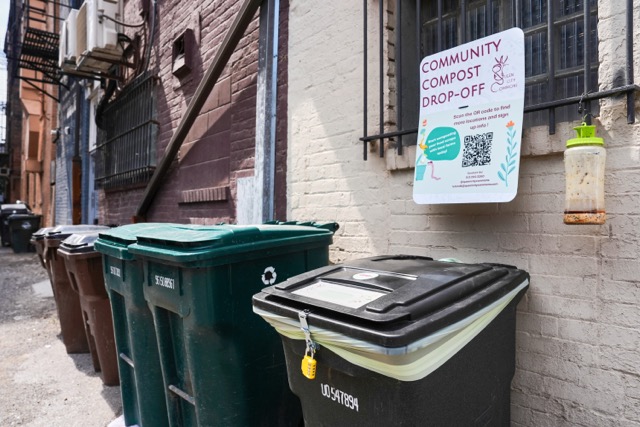Composting
By CALEIGH WELLS Associated Press
Most of what goes into U.S. landfills is organic waste, ranging from household food scraps to yard trimmings. That’s a problem because in that environment, organic waste is deprived of oxygen, which helps break material down.
The result: the release of a lot of methane, a potent greenhouse gas that contributes to global warming.
Robert Reed, with the recycling and composting company Recology, said that applying compost makes soil better at retaining moisture, which makes it resilient against droughts, wildfires and erosion.
For people who want someone else to compost their food scraps, some local governments offer curbside pickup. Otherwise, nonprofits, farmers markets and community gardens often fill that gap. Companies in some areas also will pick up the food waste to be taken away for composting for a fee.
If you’ve got a yard
Composting doesn’t necessarily require much space. Even 4 square feet — roughly the size of a standard office desk — can do the trick. Common receptacles include open wooden bins or large barrel-shaped tumblers that you can rotate on a metal rod. Free-standing piles also work.
Some people follow a strict schedule of turning the pile, often with a hoe or shovel, or adding to it regularly. Backyard composting typically relies on microbes to break down the waste, which can bring a pile’s temperature up to 130-160 degrees Fahrenheit (54-71 degrees Celsius). Others follow a more passive approach.
Experts break the composting recipe down into four main ingredients: water, oxygen, nitrogen-rich “greens” (food scraps, grass clippings) and carbon-rich “browns” (cardboard, dead leaves, shredded paper). Typically compost has two or three times as much “brown” material as “green.”
The Environmental Protection Agency recommends against meat, bones, dairy, fats and oils in backyard compost piles because they typically don’t get hot enough to fully break them down, and because they’re more likely to attract pests. The agency also says to steer clear of treated wood, glossy paper, pet waste and compostable dishware or bags.
“If you’re unsure if it’ll break down, put it in there and you’ll find out,” he said.
The bacteria and fungi feed on the pile of organic waste and turn it into compost. The finished product looks like moist, dark soil. The EPA says a well-tended pile can produce finished compost in three to five months, while a more passive pile that doesn’t reach high temperatures may take up to a year.
If you lack outdoor space
Composting indoors is possible through what’s known as vermicomposting, a process that relies on worms. People can buy premade worm bins, make their own out of untreated wood or use plastic storage bins with a few modifications, according to the EPA. The containers should have tight-fitting lids and keep out the light. Only certain types of worms will work, and they can be obtained from a worm grower or a neighbor who’s already started vermicomposting.
Instead of relying on microbes, worms feed on the carbon- and nitrogen-rich organic matter. They poop out almost-black castings. That’s the finished product. The EPA says it takes about three to six months, which can be faster than backyard composting. They can create a more nutritious end product than in traditional compost.
Traditional composting, whether indoors or outdoors, is typically a process that takes place over months, not days, Goldstein said. Electric countertop devices that promise to break down food in hours or days don’t use the same process. Goldstein said those devices produce material that can be used in gardens, but it’s “not completely broken down” and should be mixed with soil.
For More Home and Garden Visit www.zapinin.com


